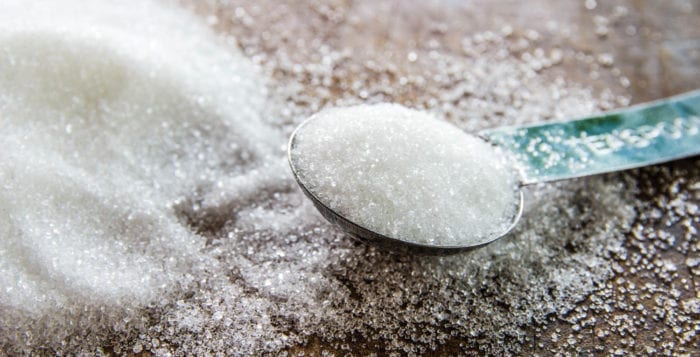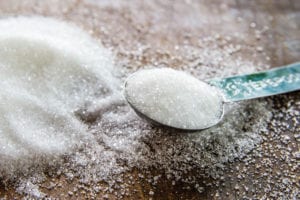It’s time to connect sugars to metabolic dysfunction. As a quick reminder, sugar is a paired unit made up of glucose and fructose. These are the same two sugars (a term that can be used generically for the various related calorie-bearing sweeteners) that comprise high fructose corn syrup. Also notable is that starch is composed of long chains of glucose. Consuming too much of any or all of these substances puts stress on your body in numerous ways. Our individual metabolic vulnerabilities fall prey to this stress, as some individuals may develop diabetes and others cardiovascular disease, etc. This lesson will focus on the stress that too much glucose can place on your metabolism.
Since your body can use glucose for energy, we are quick to accept this “blood sugar” as a good thing. We are equally inclined to believe the marketing that encourages us to buy more (sport drinks, pasta, etc.) especially if we also believe the claims that dietary fat is unhealthy. It turns out, however, high blood levels of glucose (more than two teaspoons) can be lethal. Consuming a typical sugary beverage (or a bagel) threatens to introduce five to 10 times that amount.

Luckily, your body is equipped to protect itself from such assaults and in the case of a glucose “rush,” it calls upon cells buried within your pancreas to produce insulin. Insulin works like a verbal command to your fat cells, directing them to remove glucose from your blood before it can reach dangerous levels. The more glucose consumed, the more insulin produced and the more your fat cells are called into action. (Notably and ironically, high insulin levels actually reduce the ability of your muscle cells to absorb this energy, leaving them, and you, still hungry.)
These verbal directions, when repeated frequently throughout the day, become tiresome to your fat cells, which develop a sort of hearing loss described by the medical community as “insulin insensitivity.” Progressively more insulin than before will be required to get the job done, crossing the line to a pre-diabetic state. Eventually, the cells become unable to “hear” the insulin commands (insulin resistance), a condition known as diabetes.
If that is not concerning enough, insulin also functions as an inflammatory signal to your body. Inflammation, a topic of its own, is a critical component of our health maintenance. It should work in concert with our natural repair mechanisms. But when out of balance, it inhibits our recovery from even normal wear and tear. One may develop arthritis, cardiovascular disease, and/or require extended recovery times for illness and injury.
Recent research places the blame for heart attacks on the inflammation that can develop along the walls of your arteries. Ironically, the cholesterol that was once thought to be the culprit is now seen as evidence of your body’s attempts to repair this inflammation.
Similarly, obesity, once viewed as a pre-cursor to diabetes, is now known to be just one symptom of glucose management malfunction that may occur as diabetes progresses. The acronym TOFI (Thin on the Outside, Fat on the Inside) has been coined to describe individuals who appear healthy, but have metabolic dysfunction that is dangerously real.
Our society has yet to learn the difference between looks and health. Many thin individuals are unknowingly pre-diabetic or at risk for heart disease. Even the acronym TOFI continues to promote the stereotype that fat is unhealthy. And yet, there are plenty of active, overweight individuals who are metabolically healthier than many of the thin people who judge them.
Whether absorbed from starchy foods or literally half of table sugar, glucose represents both an energy source and a cause of disease, depending on the amount and frequency of its consumption. Knowing how your body metabolizes glucose is an important step in being able to make better food and beverage choices for a healthier life. Choose well, live well. “Chow for now!”
Chris Zenyuh is a science teacher at Harborfields High School and has been teaching for
30 years.







